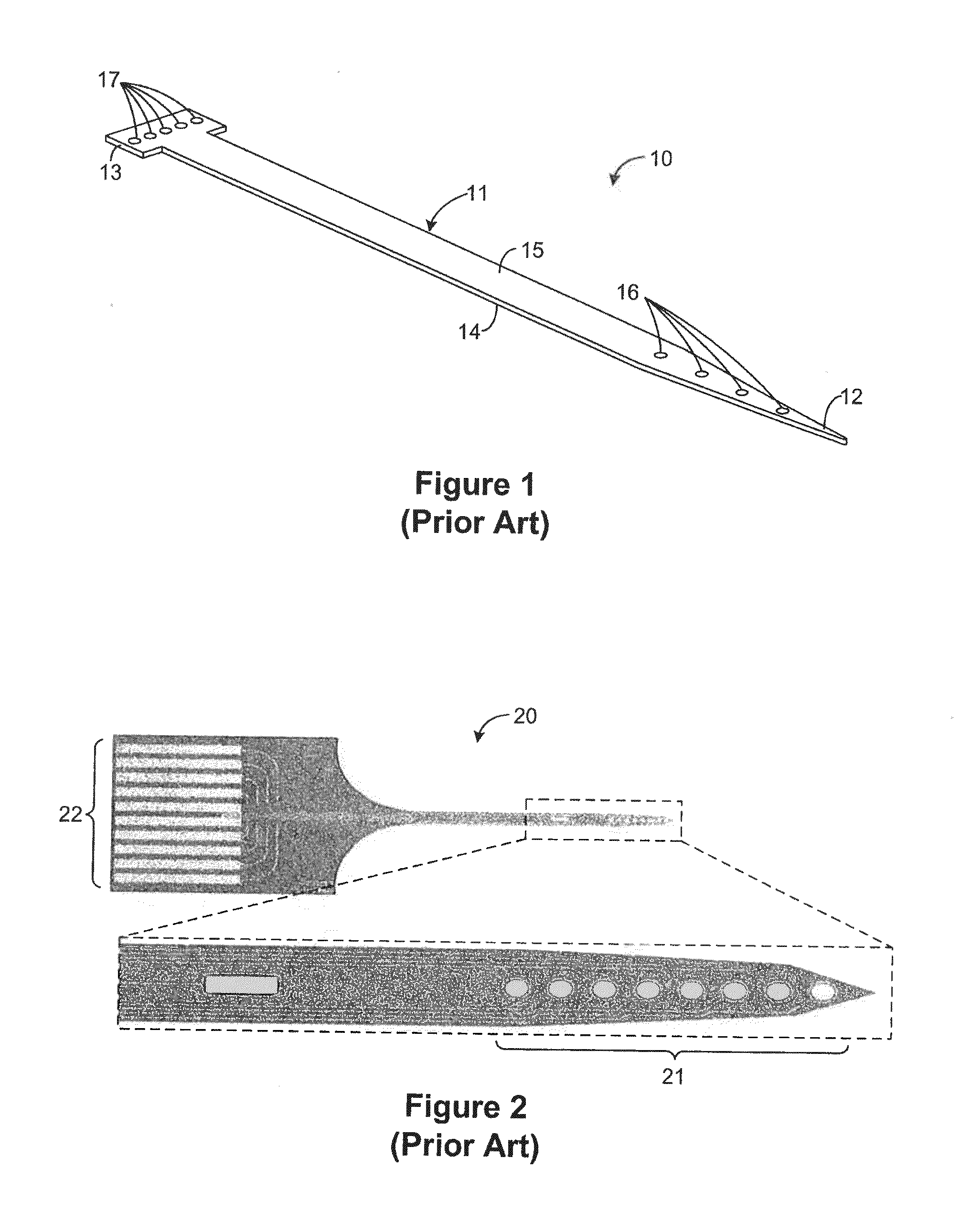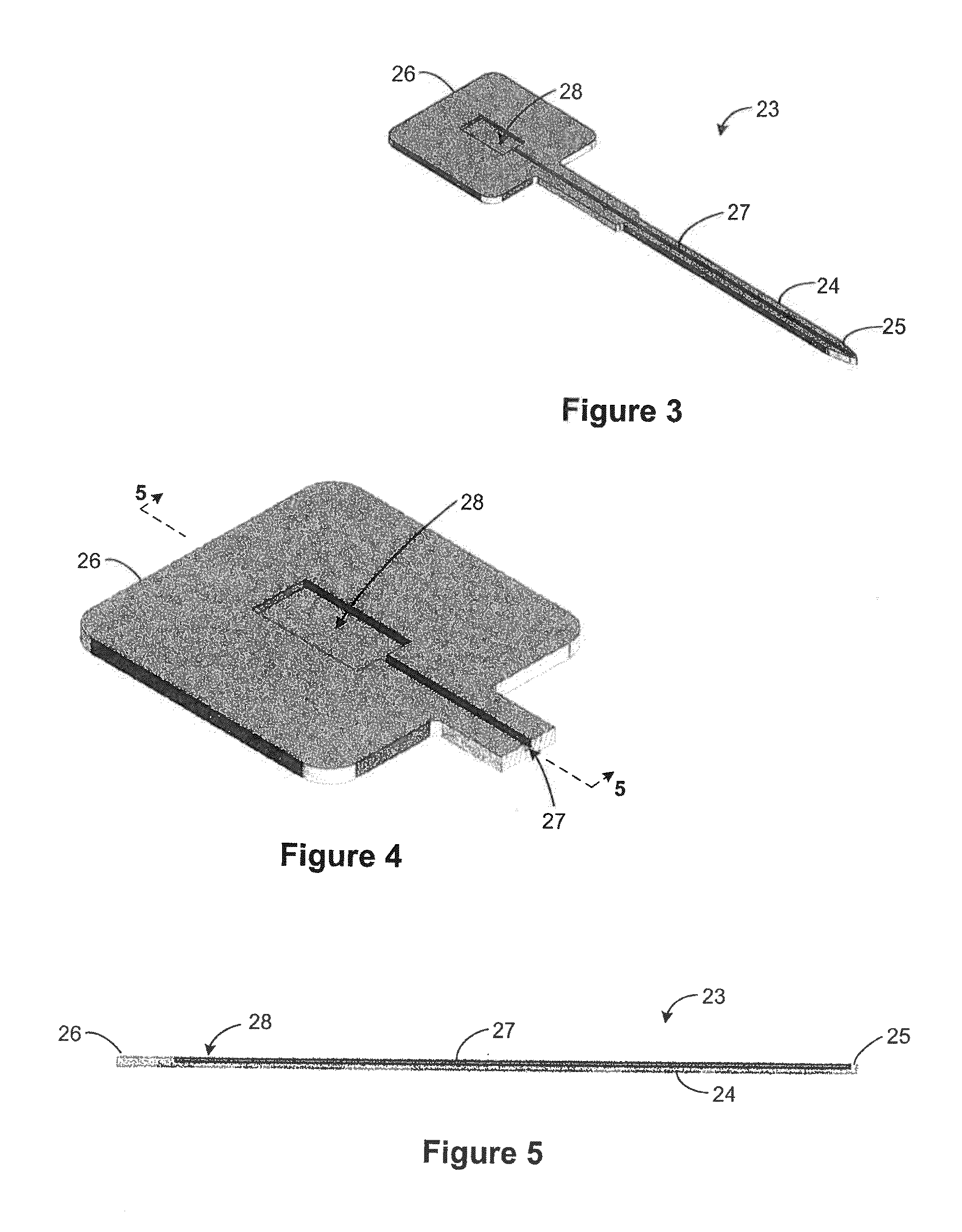Rigid stiffener-reinforced flexible neural probes, and methods of fabrication using wicking channel-distributed adhesives and tissue insertion and extraction
a flexible, rigid technology, applied in the field of thin film microprobes and fabrication methods, can solve the problems of localized tissue damage at the probe's tip, stability and longevity of stimulation and recording functions, and the stiffness of silicon-based neural probes, etc., to achieve attachment, and precise positioning. , the effect of accurate and repeatable alignmen
- Summary
- Abstract
- Description
- Claims
- Application Information
AI Technical Summary
Benefits of technology
Problems solved by technology
Method used
Image
Examples
example case
[0073]Assembly of Stiffener to Probe
[0074]An example method of assembly of a thin-film polymer probe to a silicon stiffener is next described:
[0075]A pellet of polyethylene glycol (PEG) of molecular weight 10,000 g / mol is first placed into a reservoir cavity at the tab section of the stiffener. The stiffener is then heated to 65° C. so that the PEG melts and wicks into the channel by capillary action. It is then cooled to room temperature to solidify. A flip chip bonder may be used next by placing the stiffener upside down on the base stage of the flip chip bonder. The stiffener is then picked up with the tool head. The elongated probe is positioned upside down on the base stage, i.e. the assembly base. Using the flip chip bonder, align the stiffener and the probe and then lower the stiffener and place it onto the probe. The base stage of the flip chip bonder should have a heating element to apply heat to the substrate. After placing the stiffener, the assembly is heated once again ...
PUM
| Property | Measurement | Unit |
|---|---|---|
| distance | aaaaa | aaaaa |
| speed | aaaaa | aaaaa |
| thick | aaaaa | aaaaa |
Abstract
Description
Claims
Application Information
 Login to View More
Login to View More - R&D
- Intellectual Property
- Life Sciences
- Materials
- Tech Scout
- Unparalleled Data Quality
- Higher Quality Content
- 60% Fewer Hallucinations
Browse by: Latest US Patents, China's latest patents, Technical Efficacy Thesaurus, Application Domain, Technology Topic, Popular Technical Reports.
© 2025 PatSnap. All rights reserved.Legal|Privacy policy|Modern Slavery Act Transparency Statement|Sitemap|About US| Contact US: help@patsnap.com



